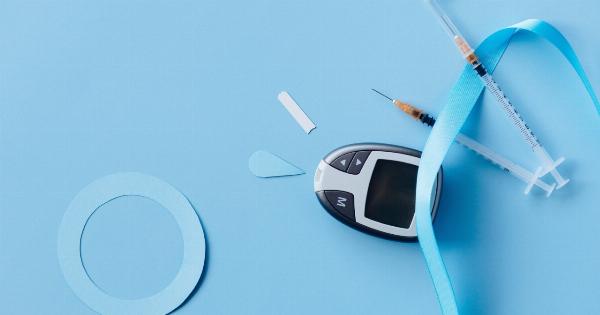Cushing’s Disease and Diabetes share some similarities and have a complex relationship. Cushing’s Disease is a hormonal disorder that may result in hyperglycemia and the development of Diabetes.
This article aims to provide a comprehensive guide to Cushing’s Syndrome and its relationship with Diabetes.
What is Cushing’s Disease?
Cushing’s Disease is caused by an excess of corticosteroids in the body. Corticosteroids are hormones produced by the adrenal glands, small glands found at the top of each kidney.
Corticosteroids play a crucial role in regulating metabolism, reducing inflammation, and controlling salt and water balance in the body. But when the adrenal glands produce too much cortisol, a condition known as hypercortisolism, it can result in Cushing’s Syndrome.
Cushing’s Disease Symptoms
The signs and symptoms of Cushing’s Disease may include:.
- Weight gain, particularly around the abdomen and face
- Thin skin that bruises easily and slow healing of cuts, scrapes, and infections
- Acne and redness in the face
- Excessive hair growth, particularly in women
- Reduced libido and fertility
- Muscle weakness and fatigue
Cushing’s Disease and Diabetes
Cushing’s Disease is linked with Diabetes. This is due to the role of cortisol, the hormone that is produced in excess in Cushing’s Disease, in regulating glucose metabolism.
Cortisol can make cells resistant to insulin, which can lead to high blood glucose levels. Over time, this insulin resistance can result in the development of Diabetes type 2.
Diabetes Symptoms and Types
Diabetes is a chronic condition in which the body is not able to produce enough insulin or use it properly.
It is characterized by high blood glucose levels, which can lead to multiple complications such as blindness, kidney failure, heart disease, and stroke. The common symptoms of Diabetes are:.
- Frequent urination
- Increased thirst and hunger
- Unexplained weight loss
- Fatigue
- Blurred vision
- Numbness or tingling in the hands or feet
There are two main types of Diabetes, type 1 and type 2. Type 1 Diabetes occurs when the body doesn’t produce enough insulin or stops producing it altogether.
Type 2 Diabetes happens when the body is not able to use insulin properly, leading to insulin resistance. Type 2 Diabetes is the most prevalent form of Diabetes in the world and is often linked to lifestyle factors such as overweight, obesity, and lack of physical activity.
Treatment Options for Cushing’s Disease and Diabetes
Treating Cushing’s Disease requires treating the underlying cause, which may be due to an adrenal tumor or long-term use of corticosteroid medications.
Treatment may involve surgery, radiation therapy, or medication, depending on the severity of the condition.
Similarly, Diabetes treatment aims to maintain healthy blood glucose levels. Treatment options for Diabetes include:.
- Lifestyle modifications such as diet and exercise
- Oral medications that help lower blood glucose levels
- Insulin injections to regulate glucose in the bloodstream
- Bariatric surgery, which may be recommended for people with Diabetes and obesity
Prevention of Cushing’s Disease and Diabetes
Preventing Cushing’s Disease is not always possible since it is caused by a variety of factors, including tumors. But reducing exposure to corticosteroids can help to reduce the risk of developing Cushing’s Disease.
To prevent Diabetes, lifestyle modifications such as increasing physical activity, maintaining a healthy weight, and eating a balanced diet can help.
For people at risk, regular blood glucose testing can help diagnose Diabetes early and prevent complications.
Conclusion
Cushing’s Disease and Diabetes share a complex relationship due to the role of cortisol hormones and glucose metabolism.
The excess of cortisol in Cushing’s Syndrome may lead to hyperglycemia and increase the risk of developing Diabetes type 2. While treating the underlying cause of Cushing’s Syndrome is crucial, prevention and early diagnosis of Diabetes through lifestyle modifications and regular blood glucose testing can significantly reduce the risk of complications.


























